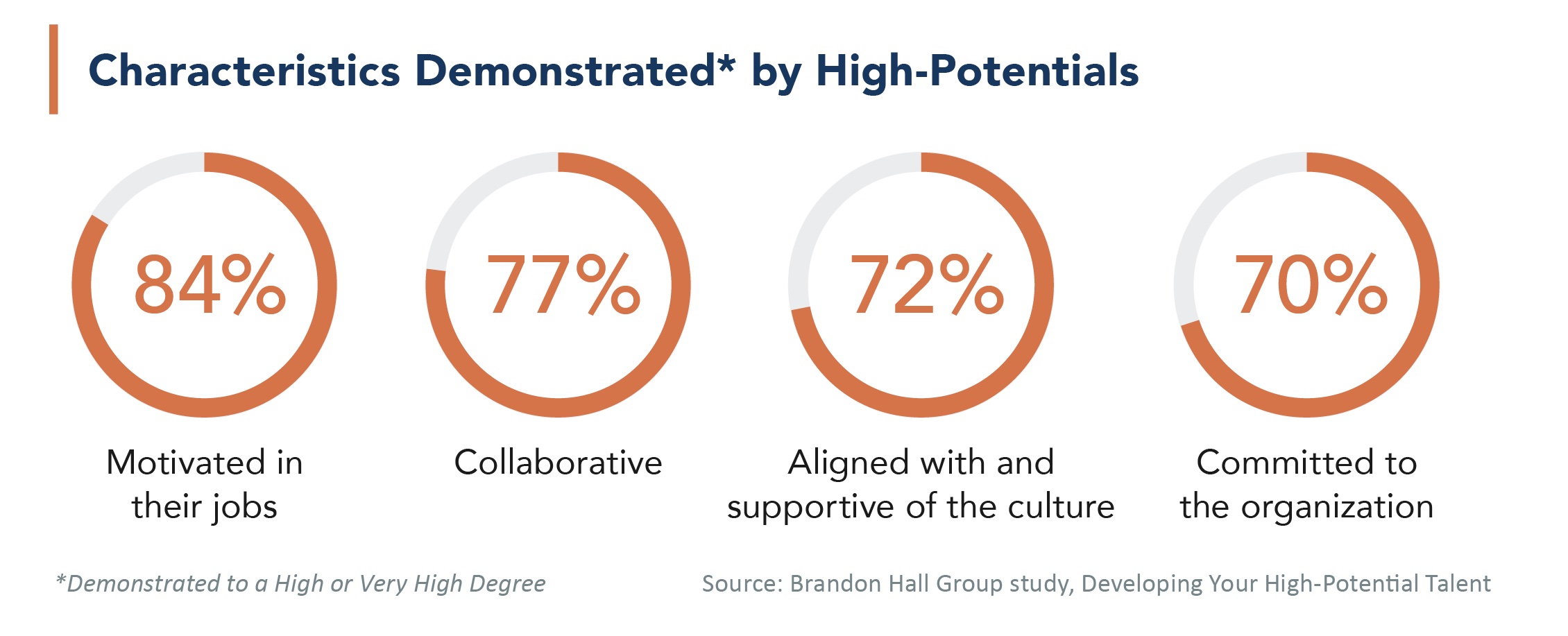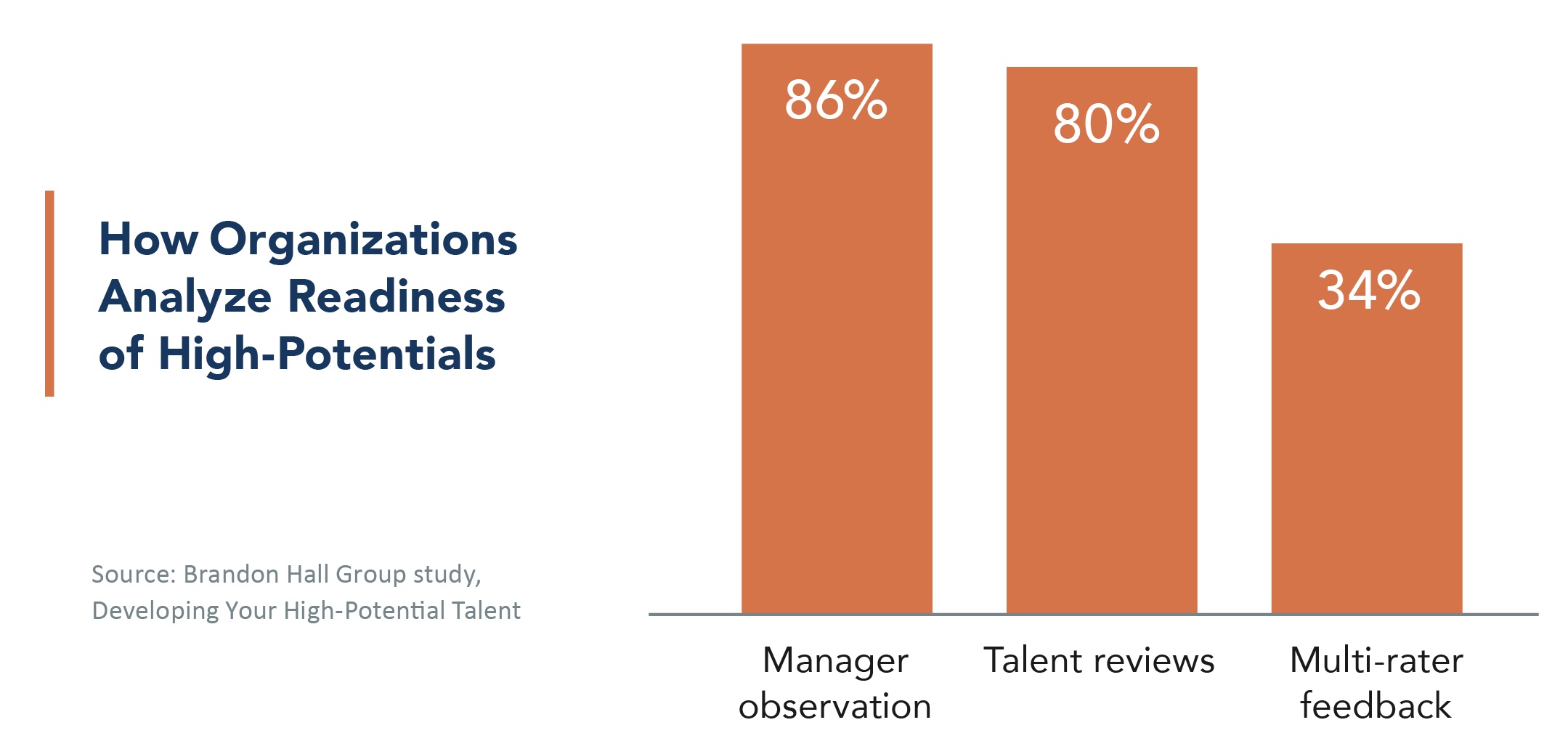
Although it may seem like a modern problem, the truth is that employers are always in drastic need of more inclusive and collaborative leaders who can drive business results and develop and retain top talent. It is critical to identify and develop high-potential employees because they exhibit the following important characteristics for at least 70 percent of employers, according to Brandon Hall Group’s research study, Developing Your High-Potential Talent:

The Need for Improvement
In research, it is rare to get unanimous or near-unanimous agreement on any question. But when it comes to identifying and developing high potentials, 97 percent of organizations believe change is needed. The improvement strategies research respondents cited most often include:
- Better career pathing
- Increasing the use of development opportunities such as team projects, job rotations, and action learning
- Increasing communication and transparency about the high-potential development and succession processes
Those are worthy initiatives, but they don’t address all the systemic weaknesses of high-potential development programs. For example, most organizations believe high-potential selection is biased and that the diversity of the talent pipeline is lacking.

5 Impactful Ways to Improve Development of High-Potentials
1. Create More Practical Experiences for High Potentials
Most organizations (75 percent) said they plan to improve targeted development opportunities to aid high potentials. This includes team projects, job rotations, and action learning. However, there are only so many opportunities, especially in smaller organizations. And sometimes, high potentials need to practice new behaviors and strategies in safe places with no real-life consequences.

That is why simulations—used by a few organizations—are a great tool. Simulation technologies have made great strides and are far more affordable than they used to be. They enable organizations to scale practical experiences to see how high potentials react and perform in new, unfamiliar, or difficult situations. They can be used for individuals or cohorts so evaluators can see how high potentials collaborate and innovate in teams.
2. Embrace Coaching and Mentoring for All
On average, 75 percent of organizations identify 15 percent or less of their employees as high potential, Brandon Hall Group research shows. That is a small enough population to enable many organizations to provide coaches or mentors to high potentials. This can be done using an internal coaches and mentors program—assuming they receive proper training—or through external coaches or mentors.
3. Commit to Increasing the Diversity of the Talent Pipeline
Employers must fully commit to having a pipeline of diverse talent so they have future leaders who can be representative of an increasingly diverse workforce. That is not happening now, as the research shows. Organizations must stop talking about diversity, equity, and inclusion, and act. The current and future workforces are the most diverse regarding demographic categories and their experience, education, and opinions. It’s well-documented that diversity and inclusion drive innovation, which businesses must rely on to survive and thrive in an uncertain future.
4. Be Inclusive in Getting Feedback on High Potentials’ Progress
Only about one-third of employers use multi-person feedback to analyze high potentials’ readiness to move into new roles. Most rely on talent reviews and manager observation.

Understanding the readiness of people for new roles is not easy. People come across differently to others based on situations and their experiences and points of view. It’s essential that decision-makers get a 360-degree view—or as close to it as they can—of how high potentials present themselves to those they work with.
5. Emphasize Well-Being and Work/Life Balance
Leadership can be difficult and stressful. Successful leaders must understand how to work hard, be smart, and stay physically and emotionally healthy. Therefore, part of the development process for high potentials should include a focus on wellness and the importance of work/life balance. Only 26 percent of organizations plan to do this now.




